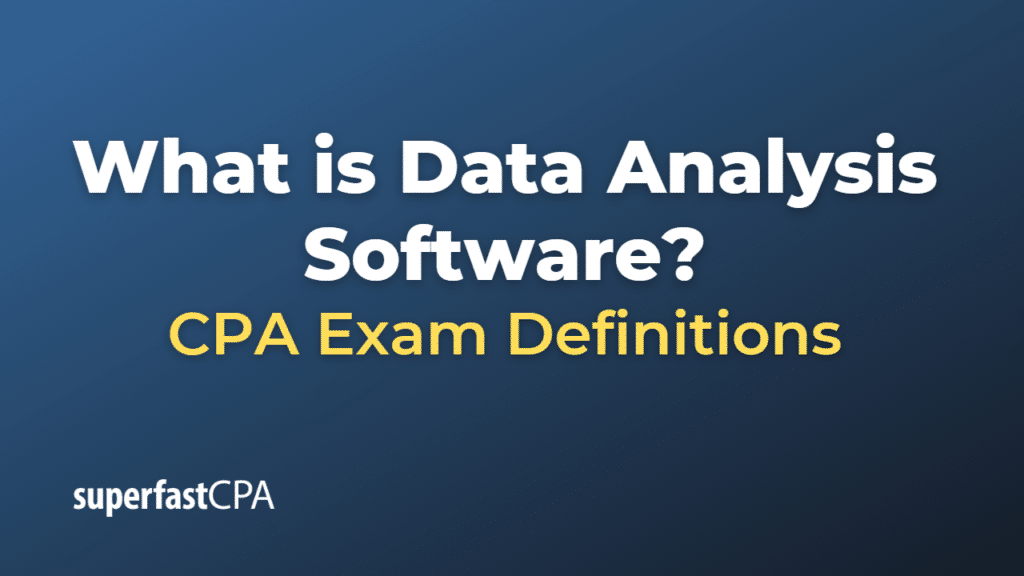Data Analysis Software
Data analysis software is a type of software used to process and analyze large amounts of data to discover patterns, relationships, and insights. It often includes various functions such as data cleaning, data transformation, data modeling, and data visualization. It can be used in a wide range of fields, including business intelligence, scientific research, social sciences, healthcare, and more.
There are various types of data analysis software:
- Statistical Software: This type of software is used to perform statistical analysis on data. Examples include R, SAS, SPSS, and Stata.
- Business Intelligence (BI) Tools: These tools are used to analyze business data and generate insights to support decision-making. Examples include Tableau, Power BI, and QlikView.
- Data Mining Tools: These tools are used to discover patterns and relationships in large datasets. Examples include RapidMiner, KNIME, and Orange.
- Big Data Processing Tools: These tools are used to process and analyze large amounts of data that cannot be handled by traditional data processing software. Examples include Apache Hadoop and Apache Spark.
- Spreadsheet Software: While not as powerful as some other types of data analysis software, spreadsheets like Microsoft Excel and Google Sheets offer data analysis functions and can handle small to moderately large datasets.
- Machine Learning Tools: These tools are used to build and apply machine learning models to data to make predictions or discover patterns. Examples include TensorFlow, PyTorch, and Scikit-learn.
These tools can be standalone software or they can be part of a larger software suite. They can also be open-source or commercial, and they can run on a single machine or distributed across many machines for big data processing. The choice of data analysis software depends on the specific needs and resources of the user or organization.
Example of Data Analysis Software
Let’s take the example of a retail company that wants to understand its sales trends to make better business decisions.
The company could use a combination of data analysis software tools for this task:
- Data Cleaning and Transformation: First, the company would use a tool like Microsoft Excel, Trifacta, or OpenRefine to clean and transform the raw sales data. This could involve removing duplicate entries, correcting errors, standardizing formats, and perhaps combining the sales data with other data, like customer demographic data.
- Statistical Analysis: Next, the company might use a statistical software tool like R or SPSS to perform statistical analysis on the data. For example, they might calculate the average sales per store, the month-over-month growth rate, or the correlation between sales and various demographic factors.
- Data Visualization: After analyzing the data, the company could use a Business Intelligence tool like Tableau or Power BI to visualize the results. They might create a dashboard that shows sales trends over time, a map that displays sales by geographical region, or a scatter plot that reveals the relationship between customer age and spending.
- Predictive Modeling: Finally, the company might use a machine learning tool like TensorFlow or Scikit-learn to build a predictive model based on the sales data. This model could predict future sales based on factors like the time of year, the location of the store, and the demographic characteristics of the local population.
By using these data analysis software tools, the company can gain a deep understanding of its sales trends, make data-driven decisions, and even forecast future sales.













